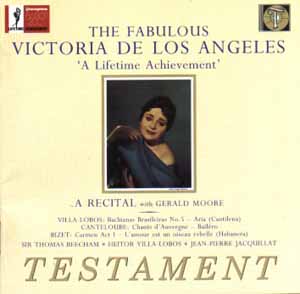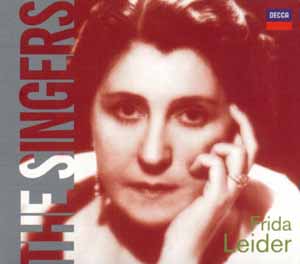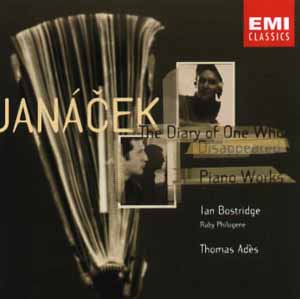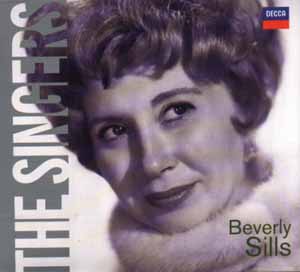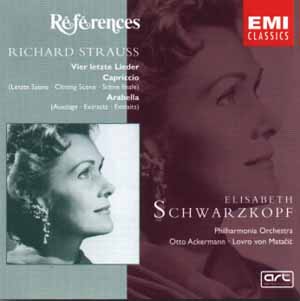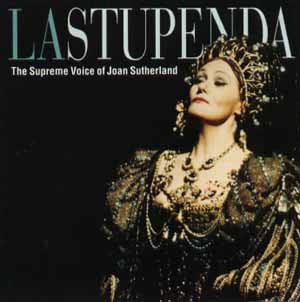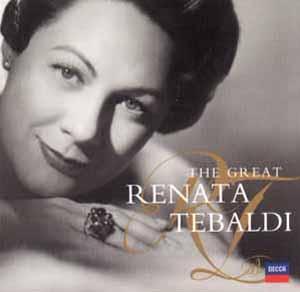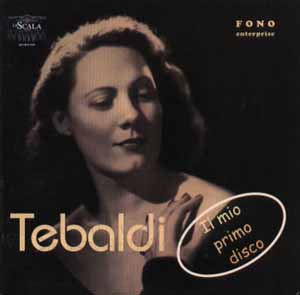Music Reviews
Classical Music - Part 33 - Vocal Accents - April, 2002
Jason Serinus
Ratings: Extraordinary Good Acceptable Mediocre Poor
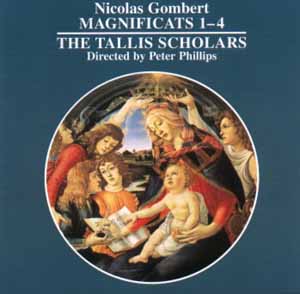
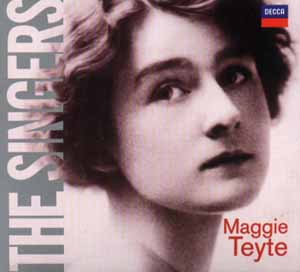
JAN�CEK: THE DIARY OF ONE WHO DISAPPEARED/PIANO WORKS � IAN BOSTRIDGE AND THOMAS AD�S � EMI 7243 5 572192 1
Performance:
Sonics:
Czech Leos Janacek (1854-1928) began his great song cycle, �The Diary Of One Who Disappeared�, when the 63 year-old suddenly found himself infatuated with a young married woman, Kamila Stosslova. The attraction arose just as Janacek, long married to a woman described as �dutiful but dull,� encountered a sequence of gripping poems published in the local Brno newspaper.
Purportedly written by a �self-taught man,� the cycle described a farmer�s son�s seduction by a Gypsy woman, and his subsequent choice to abandon his family. The poems, which mirrored Janacek�s desire to leave his wife and elope with Kamila, immediately inspired him to express his conflict in song. Work on �The Diary Of One Who Disappeared,� the first of Janacek�s many compositions inspired by Stosslova, commenced in 1917; the work premiered in Brno in 1921.
The 22-song cycle received immediate international recognition, with additional performances scheduled the following year in Berlin, London and Paris. It remains the composer�s only mature set of songs.
Janacek masterfully underscores the narrative�s emotions with highly evocative piano accompaniment. The work begins passionately, as the agitated young man describes meeting a gypsy girl whose �black tresses hung over her breasts,� and whose eyes, �like two deep wells,� immediately pierced his soul.
Moving from fear to tenderness, from prayer to remorse, the lad becomes increasingly haunted by desire. Eventually seduced in one of the two songs in which the gypsy is given voice (by mezzo Ruby Philogene, who is occasionally supported by an alluring offstage chorus of three women), he surrenders to his obsession. Wishing to make love again and again, he acknowledges that above the knees of his true love, �her rough spun skirt now rides high.� Abandoning God and family for the gypsy, he departs with a final, passionate outpouring that climaxes with two demanding high C�s.
While the poetry certainly has its melodramatic elements, anyone who has carried on a hidden affair, lived a double life, or left one partner for another will recognize the genuine emotional turmoil at the heart of the cycle. Thankfully, Janacek sets the poetry with such a masterful hand that his creation consistently rings true.
Although �The Diary of One Who Disappeared� has previously received recordings by such distinguished artists as Nicolai Gedda, Peter Schreier, and Ernst Haefliger, this new rendition by Ian Bostridge will surely earn it a wider audience. Bostridge�s tenor, equally capable of voicing sweet, touchingly youthful innocence and guilt-ridden passion, is ideally suited for the part. His finely nuanced, convincingly sincere approach, which when applied to Schubert can occasionally approach the precious, here seems totally appropriate. With composer/pianist Thomas Ad�s providing perfect accompaniment, Bostridge delivers a treasurable performance whose impact grows with repeated listening.
Save for alternative versions of two of the songs, the remainder of the disc offers Ad�s playing short piano works by the composer. Janacek wrote only a few large scale piano-cycles; the most substantial composed after 1912 is the set of 15 Moravian Folksongs, VIII/23 contained herein. Dated 1/1/22, they were designed to be sung if so desired, and include the words underlaid in the score.
The arrangements, echt Janacek in their chromaticism, range from simple to complex, and feature echoes of native Moravian harmonies. Ad�s plays convincingly, both here and in the seven piano miniatures that conclude the disc. Of great interest are two fragments, written in Kamila Stosslova�s notebook; the second was completed just two days before Janacek died of pneumonia, and titled �I wait for you.� As if to offer Janacek a sense of redemption from suffering, this marvelous, expertly recorded disc concludes sweetly with a 49-second pianistic ode to Christ�s birth.
NICOLAS GOMBERT � MAGNIFICATS 1-4 � THE TALLIS SCHOLARS � GIMMELL CDGIM 037
Performance:
Sonics:Although Flemish Renaissance composer Nicolas Gombert (c. 1495-c.1560) is not well known, he was certainly known to Charles V. Gombert joined the Emperor�s chapel as a singer in 1526,and by 1529 was master of the choirboys in the Imperial Chapel. According to a contemporary physician named Girolamo Cardano, the Emperor at one point had Gombert imprisoned in a galley after he was convicted of molesting a choirboy in his care.
Gombert secured his release by composing his last major works, a set of eight Magnificats, one on each of the eight tones. The music, generally regarded as Gombert�s masterpiece, so pleased Charles V that Gombert was pardoned and allowed to retire to a benefice in Tournai, where he at one point served as a canon of the Cathedral.
In the first of a two discs devoted to Gombert�s eight Magnificats, Peter Phillips and his famed Tallis Scholars attempt to make a good case for Gombert�s music. Gombert favors lower voices: we have four altos (three of whom are male), eight tenors and four basses in many of these Magnificats, but only two sopranos. The radiant voice of soprano Tessa Bonner, usually heard with The Tallis Scholars, here surfaces only briefly in the opening Antiphon, which lasts less than two minutes.
Gombert�s dense music has a lot going on, with a fair amount of coming and going between voices moving in a close range. As the Magnificats progress through the tones from 1 to 8, Gombert adds more voices, making the writing even more complex. He sets the even-numbered verses to polyphony and leaves the odd-numbered ones to chant.
The results, including a number of dissonances, is a bit unsettling, hardly as comfortable as listening to the Palestrina or Josquin for which this group is famed. Especially when heard as presented here, separated by chanted Antiphons that traditionally would have been sung before the Magnificat and repeated after it, the experience is far more one of Catholic piety than of luxuriating in God�s grace and beneficence.
BEL SOGNO: ITALIAN SCENES AND ARIAS � CRISTINA GALLARDO-DOM�S � TELDEC 85738 64402
Performance:
Sonics:Every once in awhile, a singer comes along whose beauty of voice and dramatic conviction make you sit up and take notice. Such is the case with the Chilean born soprano, Cristina Gallardo-Dom�s.
In a generous debut recital that features bel canto arias by Donizetti and Bellini, verismo classics by Cil�a and Catalani, four Verdi staples, and six Puccini favorites, the engaging Gallardo-Dom�s demonstrates that she has the intelligence and the pipes to make even the most oft-performed operatic arias compelling.
Interest is piqued from the opening phrases of Cil�a�s great prima donna aria, �Io son l�umile ancella.� A grand little ditty in which Adriana Lecouvreur selflessly proclaims herself a humble little angel who just happens to channel divine inspiration, the aria demands a stunning presentation. Leontyne Price pulled it off by hitting the final note forte, then dropping back to a gorgeous, shimmering pianissimo which she stretched out, then released with a final gasp that had every queen within earshot genuflecting before her. The great verismo soprano Magda Olivero, for whom the role was conceived, instead swelled on the penultimate note, making it grow bigger and bigger for more seconds than one thought possible until all were felled before her. Gallardo-Dom�s performs neither trick; instead, she sings with such consummate beauty, such idiomatic phrasing and word-painting, that one is convinced that maybe she is a channel after all.
In very different repertoire, �Al dolce guidami� from Donizetti�s Anna Bolena and �Senza mamma� from Puccini�s Suor Angelica, the soprano gives performances that can hold their own when compared to versions by Montserrat Caball�. No, Gallardo-Dom�s doesn�t have the ability to effortlessly float pianissimi as breathtakingly as did (and reportedly still does) Caball�, but her phrasing is so beautiful, the tone so wholesome and warm, that both arias succeed admirably.
Occasionally the soprano takes great risks. Hailed for her Violetta in Verdi�s La Traviata, Gallardo-Dom�s launches into the �Sempre libera� with such vigor that she abandons beautiful tone on the lower notes of runs in order to emphasize Violetta�s recklessness. Even without a high E flat, she builds the climax of the aria so convincingly that hers is one of the few performances I have heard in which the omission of that penultimate high note does not result in a lessening of impact.
Not everything is equally memorable. A comparison of Gallardo-Dom�s� �Si, mi chiamano Mim� from Puccini�s La Boh�me with classic interpretations by Renata Tebaldi and �La Divina� Claudio Muzio (each of whom recorded it twice) reveals her predecessors more imaginative, more capable of launching into the glorious soaring climax �ma quando vien lo sgelo/but when the thaw comes� with vigor and passion. But neither Tebaldi (nor Callas, for that matter) can summon tone so lovely, so perfect for such Puccini gems as �O mio babbino caro� and �In quelle trine morbide.�
Although Gallardo-Dom�s made her professional debut 12 years ago, reached La Scala as early as 1994, has sung Mim� at the Met, and Violetta, Mim�, Antonia and Li� at the Vienna State Opera, this is only her fourth appearance on disc. Given that the Warner Corporation is trimming its artist roster and downsizing its Teldec and Erato labels, it may take some time before we hear from her again.
Grab this CD! This woman�s artistry will make you happy to be alive.
GREAT SOPRANOS SING ANEW
Why focus on new CD remasterings of dead and retired sopranos when there are so many fine sopranos now before us? Simply put, because virtually none of today�s sopranos possess the individual timbre, interpretive insight, and sheer charisma of older sopranos whose voices shine on disc as never before.
Some of the discs discussed below appear in Decca�s new The Singers reissue series. Much warranted criticism of repertoire choices and production values has been leveled at this series in journals such as Opera News and Gramophone.
The great plus of the series is its 24 bit, 96 khz remastering of priceless performances, many of which have been unavailable for years. It is these discs upon which we focus. One of the minuses is that not every disc catches the featured singer in prime voice or ideal repertoire. The disc devoted to the irreplaceable Leontyne Price, for example, mostly features past-her-prime repertoire for which she was neither known nor prized. The Giuseppe di Stefano disc consists solely of excerpts from albums recorded after the initial sheen was lost from the voice. As for the Sutherland disc, its limitations are noted below.
Decca has also opted to make these reissues more hip by making them playable on CD-ROM drives; texts and photos are only available in that medium. While this gimmick may save Universal printing costs, it leaves listeners with no way to access translations without either auditioning the discs on their computers or printing out the libretti beforehand and then trying to figure out a place to store them. Personally, the last thing I would want to do is play these singers with my hard drive humming away in the background. The photos, too, are sloppily organized and poorly captioned. This is hardly a way to ingratiate die-hard vocal aficionados, or welcome new listeners into the fold.
When all is said and done, however, I remain grateful for the glorious performances again made available.
THE FABULOUS VICTORIA DE LOS ANGELES: �A LIFETIME ACHIEVEMENT� � TESTAMENT SBT-1246Performance:
Sonics:Take Victoria de los Angeles, for example. On the night of April 21, 1996, when the Catalan-born 73-year old replaced an ailing Montserrat Caball� to present a full-length recital in San Francisco�s Davies Symphony Hall, few expected to hear more than a shadow of her former voice. (There were a shamefully huge number of empty seats in the hall�s second tier). Imagine our amazement, then, to discover the voice and artistry not only intact and capable of being heard clearly from the farthest seat, but producing same warmth, charm and grace that had not been heard since the prime years of the self-same Victoria de los Angeles!
Nowhere can the soprano�s drive to communicate her sheer love of singing be better heard than on this disc. A superb remastering of a 1960 Gerald Moore-accompanied recital (with the addition of de los Angeles� famed recordings of Villa-Lobos� Bachianas Brasileiras No. 5, conducted by the composer; Canteloube�s �Bail�ro;� and Bizet�s �Habanera� from Carmen,), the disc offers a �typical� de los Angeles recital of the period.
The soprano begins with baroque selections by Sacrati, Scarlatti, and Handel, and then moves into the song repertoire. Schubert, Brahms, Faur�, Granados, Nin, Turina Guridi, Valverde, and Barrera/Calleja are featured, with each title of the Spanish selections spoken by the soprano before each song. Song accompaniments are by the great Gerald Moore, save for one track in which de los Angeles accompanies herself on guitar.
Only in recordings made in the 1930�s by Elisabeth Schumann and Lotte Lehmann will you find such carefully nuanced, artifice-free interpretations of Schubert�s �Wohin?� and Brahms� �Vergebliches St�ndchen.� For art song aficionados, this disc is a treasure.
THE SINGERS: BEVERLY SILLS � DECCA 289 467 906-2
Performance:
Sonics:
The great Beverly Sills possessed a voice whose soft, floating pianissimi could tear your heart out. Although saddled with the nickname �Bubbles� ever since her childhood appearance in a Brillo radio commercial, Sills touched deepest, not in comedy, but in the tragic roles of Bellini, Donizetti, Moore and other.
Thanks to the superb 24-bit, 96 khz remastering common to Decca�s �The Singers� series, Sills lovers can finally hear her famed performances of Richard Strauss� �Breit� �ber mein Haupt� and �Amor� in sound that easily surpasses the original lp issue. The former is a truly magical, transcendent performance � a Strauss interpretation that rings as true as those by Elisabeth Schumann (who toured the United States in the early 1920�s accompanied by Strauss). As in her 1974 recording of Mozart�s �Vorrei spiegarvi, oh Dio!�, also sounding better than ever, Sills sings quite slowly, using her unique, disembodied tones to touch listeners in new ways.
The compilation also features three great 1969 French operatic performances and a few dryly-recorded coloratura showpieces, performed with the Chamber Music Society of Lincoln Center, that give evidence of the shrillness that slowly crept into Sills� voice.
LA STUPENDA � THE SUPREME JOAN SUTHERLAND � 289 470 0262
Performance:
Sonics:
THE SINGERS: JOAN SUTHERLAND � DECCA 289 467 914-2
Performance:
Sonics:
Talk of Sills leads to her coloratura �rival,� Joan Sutherland. While Sills is certainly the deeper artist of the two � Sills in good voice would invariably hypnotize where Sutherland would either stun or sonnambulate -- Sills could deliver neither the knock-out impact of Sutherland�s �Santo di patria � Allor che I forti corrono� from Verdi�s Attila which begins the compilation, nor the radiant highs of her Australian counterpart�s �Son vergin vezzosa� from Bellini�s I puritani.
Both these performances and more distinguish the two-disc compilation, filled primarily with stupendous coloratura recordings from Joanie�s best years. �O luce di quest�anima� from Donizetti�s Linda di Chamounix derives from Sutherland�s famed 1959 Covent Garden recital, while excerpts from Rossini�s Semiramide (a duet with Marilyn Horne), Bellini�s Beatrice di Tenda, Verdi�s Rigoletto, Bellini�s Norma, Puccini�s Turandot and others derive from complete opera recordings. The 1969 �Doll Song� from Offenbach�s Les Contes d�Hoffmann, receives its first release on CD. Also included is a late, 1988 version of �Poveri fiori� from Cilea�s Adriana Lecouvreur, evidencing the decline which led to Sutherland�s imminent retirement.
(Having attended Sutherland�s breathtaking Met debut in Lucia, as well as Sills� unforgettable 1970 NYCO Roberto Devereux, I can attest that these remasterings go a long way toward capturing the wonder of their voices in their prime).
Sutherland can also be heard on a one-disc The Singers set. Alas, this is an example of what is wrong with this series. Besides the wonderful eight-minute scene from the first act of Donizetti�s Lucia di Lammermoor, recorded in 1959 � a scene that was re-recorded, albeit with less clear diction, in Sutherland�s two complete recordings of the opera -- and three Coward selections from 1966 that betray Sutherland�s limitations, most tracks date from later in Sutherland�s career. For the most part, alas, poor diction, droopy phrasing (the start of �Vorrei spiegarvi, oh Dio!� seems especially unfortunate when compared to the memorable Sills version discussed above), and inappropriate repertoire (including Reynaldo Hahn�s �Si mes vers avaient des ailes� and No�l Coward�s �I�ll follow my secret heart�) are not sufficiently compensated by a voice past its prime. Stick with the two-discs.
THE SINGERS: MAGGIE TEYTE � DECCA 289 467 916-2
Performance:
Sonics:
The woman who could sing Coward, Hahn, and French song to perfection was Dame Maggie Teyte. Dubbed �l�Exquise� by her teacher Jean de Reszke (Caruso�s predecessor at the Met), Teyte debuted at age 18 in a series of concerts conducted by her life-long friend, composer Reynaldo Hahn.
One of two Englishwomen coached by Debussy for the role of Melisande, Teyte�s famed downward portamentos, lyric purity on high, and voice filled with tenderness and sadness were perfect for the �impressionist� repertoire. So ideal were Teyte�s voice and sensibility that once, when Debussy witnessed a rehearsal in which a conductor was attempting to alter her interpretation, he boomed out, �Laissez-faire Maggie Teyte!�
A lyric soprano, Teyte rose to prominence at a time when every major opera house had a resident lyric soprano. Although recognized as an expert in the French repertoire, her appearances grew infrequent, with occasional concerts on the BBC. At one point, she even resorted to singing in vaudeville.
Happily, Teyte�s career was resurrected in 1936, at age 48, by a set of Debussy recordings accompanied by the great Alfred Cortot. While Teyte�s personality at the time had become increasingly armored, her singing had become more and more transparent, as though she was revealing secrets to her audience that she dared not share any other way. Her famed 1941 recording of Hahn�s �L�heure exquise,� available on a two-disc EMI set, exemplifies this gift of intimate communication.
This wonderful reissue at last brings to CD long unavailable recordings from 1932 and 1937, the latter from a live broadcast. Teyte�s charm in �Tu n�es pas beau � je t�adore� from Offenbach�s La Perichole proves incomparable, her drop into chest voice on the word �brigand� revelatory. Hahn�s �Si mes vers avaient des ailes,� Faur�s �Apr�s un r�ve� � Teyte knew both composers � Noel Coward�s �I�ll Follow My Secret Heart,� and a number of sentimental English songs are equally memorable. Though there are other singers one would choose for the Schumann and Brahms songs from 1937, the English songs are superb. This disc is like a pearl, waiting to be discovered and treasured.
THE SINGERS: FRIDA LEIDER � DECCA 289 467 911-2
Performance:
Sonics:
Equal revelations come with this disc of acoustic recordings from the early 1920�s by the great Wagnerian soprano Frida Leider. Leider�s great successor in the Wagnerian repertoire, Kirsten Flagstad, may have had the bigger, more stunning instrument, but Leider (born in 1888, the same year as Teyte, Schumann, Lehmann and Schorr) offered a deeper range of expression than Flagstad, married to an elegant, thrilling sensual beauty rarely heard from a Wagnerian soprano.
Marvelous in Mozart (listen to the �Dove Sono� from Le nozze di Figaro on this disc and the electrical �Or sai chi l�onore� from Don Giovanni available elsewhere) -- a composer neither Flagstad nor Nilsson could sing well -- Leider�s Wagner must be heard. Among the Wagner recordings selected for this disc by the late critic John Ardoin are Leider�s 1925 �Du bist der Lenz� scene with Melchior from the first act of Die Walk�re. Although time considerations on these early recordings leaves it frustratingly shorn of the first act climax, both singers are marvelous, with Melchior the most heroic and strongly voiced of Siegmunds. No other soprano, save for Lehmann and Rysanek, equals Lieder in this music.
It�s a shame that the great electrical recording of Leider and Melchior in the love duet from Tristan und Isolde is omitted, but that can be found elsewhere. Instead, we have Leider�s treasurable 1921 �Liebestod� from Tristan und Isolde, 1925 �Zu neuen Taten� from Die Gotterdammerung, and other Wagner arias from Tannh�user, Parsifal, and Seigfried.
In addition, Beethoven�s �Ah! perfidio� and �Abscheulicher!� and Weber�s �Ozean, du Ungeheuer!� grace this not-to-be-missed disc.
Do not be put off by the acoustic recordings; the gorgeous, pure timbre of Leider�s unique voice survives.
TEBALDI: MY FIRST RECORD � FONO 1009
Performance:
Sonics:
THE GREAT RENATA TEBALDI � DECCA 289 470 280-2
Performance:
Sonics:
New to opera? For core lyric/dramatic Italian operatic repertoire, start with Renata Tebaldi and Maria Callas, the two dramatic sopranos who dominated operatic stages fifty years ago.
Despite its flaws, I highly recommend My First Record, containing many of Tebaldi�s first 1949 and 1950 recordings for Fonit-Cetra and Decca. The booklet is in Italian, which doesn�t help. And despite initial claims that the selections are taken from original masters, the sometimes ridiculously over-reverbed arias are ripped off from sometimes less than pristine �78�s. Nonetheless, the singing, from the very first notes, is absolutely right.
Tebaldi endorsed this 17-selection issue � I have a rare autographed copy -- and its indispensability is unquestionable. Here you will find her first recordings of �Tacea la notte placida,� �Vissi d�arte,� the great soprano arias from Gounod�s Faust, �Un bel di,� �In quelle trine morbide,� �La mamma morta� (famed from the movie Philadelphia, in which it was sung by Callas), �Ebben?�ne andr� lontana� (sung in the movie Diva), Mimi�s two great arias from La Boh�me, and key arias from Boito�s Mefistofele, and Verdi�s La Traviata, Otello, and Aida. In short, this is a compendium of some of greatest arias from the 19th century lyric/dramatic repertoire of which Puccini and Verdi were the prime exponents.
The packed two-discer offers two Verdi selections from 1949, repeating the �Tacea la notte placida� from Il Trovatore in better sound. Evreything else is taken from the 1950�s (Tebaldi�s prime years) and 1960�s. Some of this repertoire was previously released on the 1991 London La Tebaldi two-discer, but the mastering is better here.
No, you won�t find a trill, even when it is called for. Hence, Bellini and Donizetti are absent. Nor will you find the distinctive darkness or pathetic fragility that Callas brought to some of this repertoire. But sheer beauty of tone, absolute sincerity, an irresistible warmth in the lower range, and convincingly idiomatic phrasing leave opera queens no choice but to shed pretense and acknowledge true royalty.
THE VERY BEST OF MARIA CALLAS � EMI 7243 57230-24
Performance:
Sonics:
Tebaldi had the feminine warmth of heart; Callas cut to the center of the heart when she was not slashing it to bits. She also possessed, at least in her ten-year prime extending from 1949 to 1959, the vocal extension beyond high C, the trill, and the fluid technique that Tebaldi lacked.
In the end, debates over which was the greater singer is pointless. Tebaldi, who is still alive, remains a very different woman than Callas. What is great about both artists is that they were gifted singing actresses whose magnificent voices were true reflections of their inner beings. Some listeners may naturally gravitate toward one singer over the other. But both women touched upon truths that make the characters they illumined come alive.
Just when you think you know what Callas is all about, another facet of her greatness and her drama is revealed. This packed 77:38 disc of 17 selections is the US version of the two disc The Romantic Callas set recently released in Europe. While this compilation focuses far more on Callas� romantic repertoire than her extraordinary bel canto, her late �Habanera� from Bizet�s Carmen and unforgettable �J�ai perdu mon Eurydice� from Gluck�s Orph�e, both in the lower voice which remained intact even as the top deteriorated, stun anew with their individuality.
Except for Charpentier�s �Depuis le jour� (1961) and Mozart�s �Porgi amor� (1964), neither of which Callas ever did well, and certainly could not easily sustain at the time of these late recordings, this is all prime Callas. It�s a shame that identical recordings of five of these selections also appear on the marvelous Maria Callas: The Legend compilation issued just last year. Several others � �Casta Diva� from Bellini�s Norma, �Un bel di,� and �Si, mi chiamano Mimi� -- appear on that issue in different versions, taken either from other recordings of the opera (Callas recorded Norma twice) or from a recital disc as opposed to the complete opera. Nonetheless, every time Callas recorded an aria it sounded a bit different, and what we do have sounds so much better than on most US pressings of the original lps that one cannot quibble too strongly.
If you�ve got an appetite for trash, the photo of a gorgeous, fur-enshrouded Maria hugged by Onassis on front and Meneghini on rear is an opera in itself.
- Jason Serinus -� Copyright 2002 Secrets of Home Theater & High Fidelity
Return to Table of Contents for this Issue.


